| Class: | angiosperms |
| Order: | Poales |
| Family: | Juncaceae |
| Genus: | Juncus |
| Scientific name: | Juncus gerardii Lois. |
| Name acc. to: | Gubanov 1996 |
| Herbar: | list records   |
| open map in a new window | 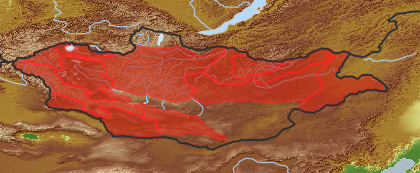 |
| Habitat: | Subsaline swampy meadows, solonchaks, small grass bogs, pebbles and muddy-sandy places at river banks and brooks (Grubov 2001). |
| Habit (i)general appearance of a plant | |
| Growth form: (i)Herb, shrub, tree or climber. | annual (i)Completing its life cycle within one year or one growing season; roots weak and thin  inherited by genus Juncus: annual inherited by genus Juncus: annual
herb (i)Herbaceous, erect plant, up to 2m high, mostly with a leafy shoot; if perennial, shoots die to the ground each season, shoots are not woody
example: Artemisia pectinata   inherited by family Juncaceae: herb inherited by family Juncaceae: herb  inherited by genus Juncus: herb inherited by genus Juncus: herb
perennial (i)Living for several to many years, as opposed to annual and biennial  inherited by family Juncaceae: perennial inherited by family Juncaceae: perennial
|
| Parasite status: (i)Is the plant a half- or full parasite? | no parasite/saprophyte (i)Plant fully autonomous, leaves with chlorophyll
example: Most plants, Ranunculus  inherited by family Juncaceae: no parasite/saprophyte inherited by family Juncaceae: no parasite/saprophyte
|
| Water or terrestrial plant: (i)Where do the plants grow? | water or swamp plant  inherited by genus Juncus: water or swamp plant inherited by genus Juncus: water or swamp plant
plants in swamps, marshes or bogs, leaves rising above water (i)Semiaquatic; plant terrestrial, but restricted to wet or moistured environments with ground water at or near the surface
example: Phragmites communis  inherited by genus Juncus: plants in swamps, marshes or bogs, leaves rising above water inherited by genus Juncus: plants in swamps, marshes or bogs, leaves rising above water
|
| Leaf (i)expanded, usually photosynthetic organ of a plant (including phylloclades) | |
| Leaf development: (i)Structure and development of leaves. | common leaf (i)Green, often divided in blade and petiole
example: Cotoneaster  inherited by genus Juncus: common leaf inherited by genus Juncus: common leaf
with green leaves (i)Plant with green leaves  inherited by family Juncaceae: with green leaves inherited by family Juncaceae: with green leaves  inherited by genus Juncus: with green leaves inherited by genus Juncus: with green leaves
round/terete blade (i)Cross-section round  inherited by genus Juncus: round/terete blade inherited by genus Juncus: round/terete blade
semi-terete blade (i) Cross-section semicircular
example: Salsola  inherited by genus Juncus: semi-terete blade inherited by genus Juncus: semi-terete blade
|
| Leaf arrangement: (i)Arrangement of leaves at the stem. | alternate (i)One leaf per node; distiche: arranged in two vertical rows, equitant
example: Phragmites    inherited by family Juncaceae: alternate inherited by family Juncaceae: alternate
others ? (i)Not as above (soll gelöscht werden)  inherited by genus Juncus: others ? inherited by genus Juncus: others ?
|
| Simple or divided leaves: (i)Are the leaves simple or completely divided in several parts? Blade of the leaf entire or (more or less) deeply dissected. Attention: There are various appearances of the leaf margin (from entire to toothed and lobed). Here, we ignore this and ask only for dissections that separate the leaf for more than one third of its length or width, whatever is smaller. Sometimes, it is difficult to tell apart compound leaves from a shoot system with simple leaves: look for stipulae and/or axillary buds at the ground of the leaves: if only some possess these structures, the others are most likely leaflets of a compound leaf. | simple (i)Non-divided leaf, but margin may be incised nearly to the ground   inherited by order Poales: simple inherited by order Poales: simple
|
| Shape of blade: (i)Easy for simple leaves. In compound leaves use the general shape of leaflet. Always check the ground for largest leaves of a plant. To be worked out: how to handle pinnate leaves? | linear incl.grasslike or oblong (i)Leaves more than two times longer than broad with more or less parallel margins; see character: stipule for ligula
example: Dracocephalum ruyschiana, Poaceae, Scutellaria scordifolia, Pinus   inherited by family Juncaceae: linear incl.grasslike or oblong inherited by family Juncaceae: linear incl.grasslike or oblong
|
| Leaf margin: (i)Structure of leaf margin (or that of a leaflet in case of compound leaves). Attention: Here we ask for the leaf margin, defined as all those dissections that separate the leaf for less than one third of its length or width, whatever is smaller. To be worked out: how to handle margin of pinnate leaves? | entire (i)Plain margin, not toothed
example: Iris   inherited by order Poales: entire inherited by order Poales: entire
|
| Petiole: (i)Leaf divided into stalk (petiole) and blade. | without (i)Leaves without petiole (stalk), sessile
example: Poaceae, Iris   inherited by family Juncaceae: without inherited by family Juncaceae: without
|
| Stipule: (i)Leaflets at the base of the petiole, these are smaller and of different shape. | none (i)Without stipules
example: Euphorbia, Ericaceae s.l.  inherited by family Juncaceae: none inherited by family Juncaceae: none
|
| Leaf veination: (i)Arrangement of the main veins of a leaf. | parallel (i)Most veins arranged parallel to the length of leaf, mostly no pronounced main vein (usually in elongate to linear leaves)
example: Most Monocotyledonae, Plantago, Veratrum, a lot of Caryophyllaceae looks like that.   inherited by order Poales: parallel inherited by order Poales: parallel
|
| Flower (i)reproductive portion of the plant, consisting of sepals, petals, stamens, and pistils | |
| Flower appearance and pollination: (i)General appearance of the flower. | not attractive, wind-pollinated or some water plants (i)Small, colourless or green flowers
example: Betula, grasslike plants: Carex, Setaria, Juncus  inherited by family Juncaceae: not attractive, wind-pollinated or some water plants inherited by family Juncaceae: not attractive, wind-pollinated or some water plants
|
| Flower colour: (i)Attention: assess colour of the most colourful parts of the flower, but not of the stamens; be aware of single plants with a mutation (mostly white) on flower colour. | colourless (i)Dry membranous  inherited by genus Juncus: colourless inherited by genus Juncus: colourless
greenish (i)petals absent or not distinctly different from colours of leaves, only stigmas (white) or anthers (yellow) may differ in color
example: Chenopodium, Triglochin  inherited by genus Juncus: greenish inherited by genus Juncus: greenish
|
| Perianth arrangement: (i)Attention: in some plants, flowers may be dimorphic in different ways (dioecious or gynodioecious). If flowers vary, record the characters of the most showy flowers. | simple, similar (i)Only one type of perianth leaves (tepals)
example: Tulipa   inherited by family Juncaceae: simple, similar inherited by family Juncaceae: simple, similar
|
| Diameter of flower: (i)Diameter of flower or flower head. | to 5 mm (i)
example: Aruncus  inherited by family Juncaceae: inherited by family Juncaceae:
|
| Flower symmetry: (i)Symmetry of the perianth leaves. Attention: to assess this character, look on sepals, petals and stamens, but neglect carpels and ovary. | radiary, regular (actinomorphic) (i)More than two axis of symmetry
example: Saxifraga: 5; Iris: 3   inherited by family Juncaceae: radiary, regular (actinomorphic) inherited by family Juncaceae: radiary, regular (actinomorphic)
|
| Flower form: (i)common forms of flowers ? Veronica | simple (flat) - Do not confuse with inflorescences as in some Asteraceae (i)Petals spread out, flower appearing flat
example: Mollugo, Trientalis, Pulsatilla, Saxifraga   inherited by family Juncaceae: simple (flat) - Do not confuse with inflorescences as in some Asteraceae inherited by family Juncaceae: simple (flat) - Do not confuse with inflorescences as in some Asteraceae
|
| Petal / Tepal number: (i)Number of petal leaves (inner perianth leaves, usually coloured). | 6 (i)
example: Allium, Lilium, Dactylorhiza  inherited by family Juncaceae: 6 inherited by family Juncaceae: 6
|
| Petal / Tepal fusion: (i)To which degree are the petal leaves connected? Petals sympetalous. | free (i)all petal leaves separate from each other
example: Anthriscus  inherited by family Juncaceae: free inherited by family Juncaceae: free
|
| Spur: (i)A hollow, slender, sac-like appendage of the perianth leaves, storing nectar. | no spur (i)Flower without appendage
example: Peganum  inherited by family Juncaceae: no spur inherited by family Juncaceae: no spur
|
| Stamen number: (i)Attention: We ask for the reproductive organs of the flower dispersing pollen. Count only fully fertile stamens, not staminodia (e.g. Parnassia). | 3 (i)
example: Poa, Iris  inherited by genus Juncus: 3 inherited by genus Juncus: 3
6 (i)
example: Veratrum, Smelowskia, Juncus  inherited by family Juncaceae: 6 inherited by family Juncaceae: 6
|
| Stamen fusion: (i)To which degree are the stamens fused? Attention: Whereas the pollen sacs itself are often free., their stalks (filaments) may be fused. Here, we count them as fused if they are together over at least one thirth of their length. | free (i)Stamens with separate bases
example: Malus  inherited by family Juncaceae: free inherited by family Juncaceae: free
|
| Pistil number: (i)Number of pistils (female floral organs: style, if developed; stigma and carpels/ovary together build the pistil). | 1 (i)One carpel, but clearly one stigma
example: Pyrola, Primula, Alyssum  inherited by family Juncaceae: 1 inherited by family Juncaceae: 1
|
| Carpel number: (i)Number of carpels (carpel: forming a simple pistil or part of a compound pistil, modified leaf). | 3  inherited by family Juncaceae: 3 inherited by family Juncaceae: 3
|
| Carpel fusion: (i)To which degree are the carpels (modified leaf forming simple pistil or part of a compound pistil) fused. | fused (i)Carpels united into an ovary, only styles are free
example: Malus, Berberis  inherited by family Juncaceae: fused inherited by family Juncaceae: fused
|
| Style number: (i)Portion of the pistil connecting the stigma to the ovary. | 1  inherited by family Juncaceae: 1 inherited by family Juncaceae: 1
|
| Stigma number per style: (i)Number of stigmas per style. | 3 (i)Three stigmas, resulting from three fused carpels with or without develped style  inherited by family Juncaceae: 3 inherited by family Juncaceae: 3
|
| Ovary position: (i)For entirely or partly fused carpels, describe their position in relation to the insertion point of perianth leaves (best done by doing a longitudinal section of a flower). | superior (hypogynous) (i)Base of carpels attached above insertion point of perianth leaves, carpels free or fused
example: Delphinium, Anemone    inherited by family Juncaceae: superior (hypogynous) inherited by family Juncaceae: superior (hypogynous)
|
| Sex: (i)Distribution of male and female organs among flowers, only most commonly cases. | bisexual, hermaphrodite (i)All or nearly all flowers of a plant with male and female parts
example: Haplophyllum, Chenopodium  inherited by family Juncaceae: bisexual, hermaphrodite inherited by family Juncaceae: bisexual, hermaphrodite
|
| Inflorescence (i)flowering part of a plant, describes the arrangement of the flowers on the flowering axis | |
| Inflorescence: (i)Structure of the inflorescence. | Flowers in inflorescence (i)No solitary flowers  inherited by family Juncaceae: Flowers in inflorescence inherited by family Juncaceae: Flowers in inflorescence
Compound inflorescences (i)Flowers on shoots of higher orders (complex branched)
example: Solidago   inherited by family Juncaceae: Compound inflorescences inherited by family Juncaceae: Compound inflorescences
|
| Appearance: (i)Outer look of the inflorescence. | terminal (i)Inflorescence is the highest point of the plant and may consist of a single flower only
example: Cypripedium, Rhaponticum, Ligularia sibirica, Echinops  inherited by family Juncaceae: terminal inherited by family Juncaceae: terminal
|
| Inflorescence type: (i)Types of inflorescence. Attention: We here ask for the botanical nomenclature of inflorescences, which is sufficiently complicated. Tick only, if you are certain, or tick all inflorescence types that appear similar of these of the plant in question. | cyme (i)A branched inflorescence, where the main shoot soon ends in a flower, being overtopped by one ore more shoots; attention: the flowers are often very crowded and the type difficult to identify (Lamiaceae)
example: Lamiaceae, Caryophyllaceae, Mollugo cerviana, Panzerina   inherited by family Juncaceae: cyme inherited by family Juncaceae: cyme
others (in traits_comments nicht aufgeführt) (i)Not as above
example: Sparganium: globose capitate  inherited by family Juncaceae: others (in traits_comments nicht aufgeführt) inherited by family Juncaceae: others (in traits_comments nicht aufgeführt)
|
| Fruit (i)the seed bearing organ, with or without adnate parts; a ripened ovary and any other structures which are attached and ripen with it. Aggregate fruits are handled like simple fruits for determination. | |
| Consistency: (i)Fleshy fruits or dry fruits, see dispersal adaptations for further classification. | dry (i)With a dry outer shell, no fleshy parts, but seed (embryo) could be edible  inherited by family Juncaceae: dry inherited by family Juncaceae: dry
|
| Type of fruit: (i)Common fruit types (including pseudocarp). | Solitary fruits (i)     inherited by family Juncaceae: Solitary fruits inherited by family Juncaceae: Solitary fruits
capsule (i)Dry dehiscent fruit, releasing seeds by slits or holes.
example: Poppy, most Caryophyllaceae, Cerastium, a lot of Scrophulariaceae, Iris (oppened capsule looks like Delphinium), Zygophyllum - it is a very common fruit type     inherited by family Juncaceae: capsule inherited by family Juncaceae: capsule
Dehiscent fruits (i)Fruits open along a longitudinale line (except silicula)  inherited by family Juncaceae: Dehiscent fruits inherited by family Juncaceae: Dehiscent fruits
|
| Opening of fruit: (i)Mode of dehiscence at maturity to release seeds. | opening / dehiscent (i)Dry? Fruits opening with different types  inherited by family Juncaceae: opening / dehiscent inherited by family Juncaceae: opening / dehiscent
|
| Size of fruit: (i)Size of the fruit including appendage. | to 5 mm (i)
example: Halerpestes: many folicles forming dry nutlets  inherited by family Juncaceae: inherited by family Juncaceae:
|
| Dispersal: (i)Appearance of fruit or seed (if single) and adaptations to dispersal. | Otherwise (i)All parts dry, no conspicuous adaptations  inherited by family Juncaceae: Otherwise inherited by family Juncaceae: Otherwise
|
| Hairs | |
| Has hairs?: | no hairs, glabrous  inherited by genus Juncus: no hairs, glabrous inherited by genus Juncus: no hairs, glabrous
|
| Shoot/Stem (i)a young stem or branch | |
| Cross section: (i)Shape of the cross section of a stem or shoot (look at first to second year shoots). | round (i)Stem or shoot round
example: Allium  inherited by family Juncaceae: round inherited by family Juncaceae: round
flattened (i)Stem or shoot laterally compressed  inherited by family Juncaceae: flattened inherited by family Juncaceae: flattened
|
| Spines, thorns or prickles: (i)Shoot with conspicuous spines, thorns or prickles. | absent (i)Stem glabrous or hairy, but never with spines, thornes or prickles
example: Gentiana barbata  inherited by family Juncaceae: absent inherited by family Juncaceae: absent
|
| Root / shoot below ground (i)plant part below ground (in most cases), including below ground shoots, without leaves | |
| Root type: (i)Organisation of the roots. | homorhizous (i)Many equal roots
example: Monocotyledonae  inherited by order Poales: homorhizous inherited by order Poales: homorhizous
|
| Distribution (i)region where the plant is likely to be found | |
| Distribution (Veg. Zones): (i)acc. to Grubov 1952 | Khentei (i)In distribution data often named as '2' 
Khangai (i)In distribution data often named as '3' 
Mongol-Daurian (i)In distribution data often named as '4' 
Khobdo (i)In distribution data often named as '6' 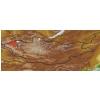
Mongolian Altai (i)In distribution data often named as '7' 
Middle Khalkha (i)In distribution data often named as '8' 
East Mongolia (i)In distribution data often named as '9' 
Depression of Great Lakes (i)In distribution data often named as '10' 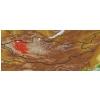
Gobi-Altai (i)In distribution data often named as '13' 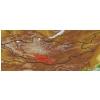
Dzungarian Gobi (i)In distribution data often named as '14' 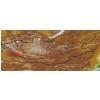
Transaltai Gobi (i)In distribution data often named as '15' 
acc. to: Gubanov 1996 |
| Distribution Khangay: (i)acc. Flora Khangaya 1989 | II
|